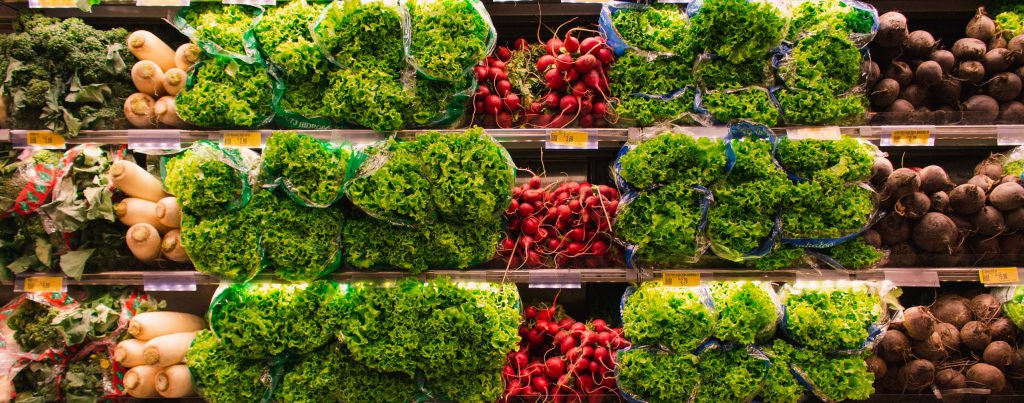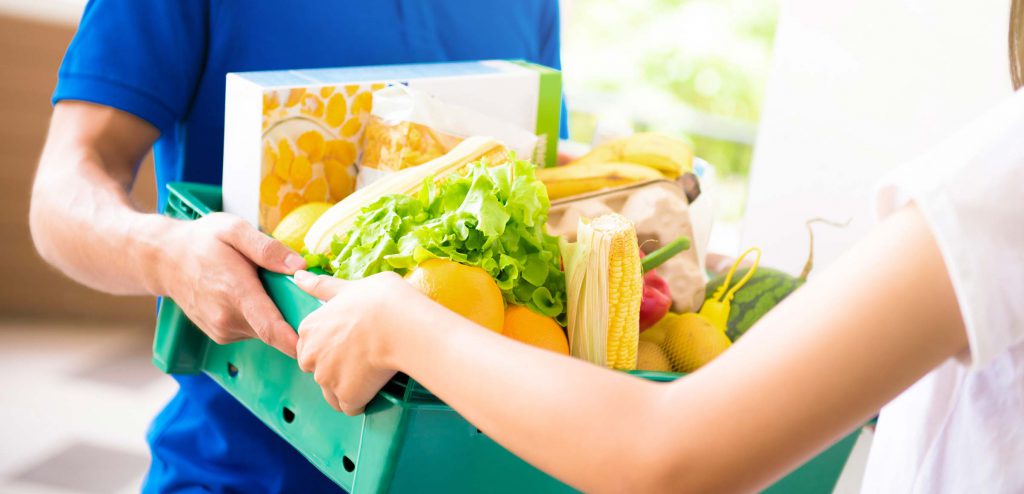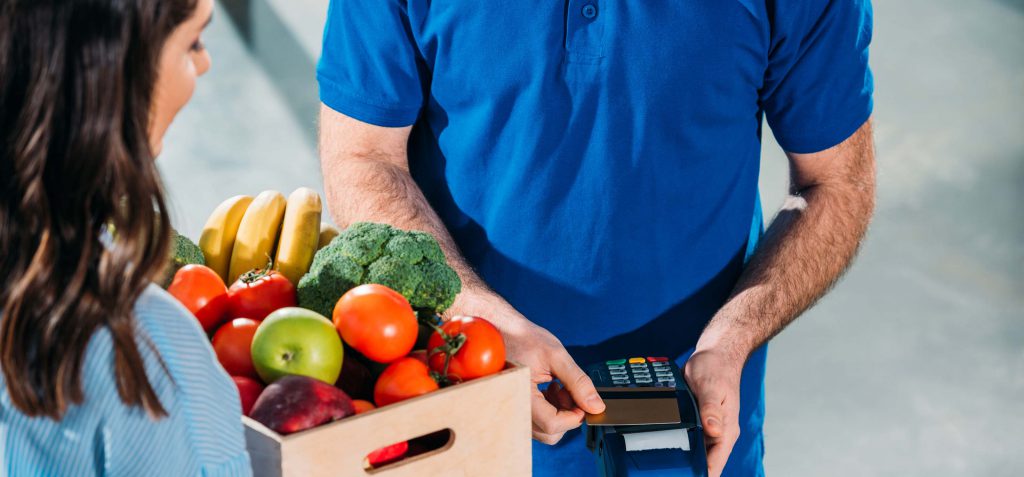
Instacart Could Soon See Troubled Waters, As Grocers Realize Its True Implications
TThe thing about tech is, it never stands still. As soon as you’ve made amends with the disruptions caused by some tech companies’ ambitions, you get hit with the waves of yet another company’s disruption. A principal that is newfound to the grocery industry, which has long escaped the major disruptions of tech. Driven by the shift to eCommerce, grocers are now bound to consistently experience changing circumstances. In order to survive this, grocers must be conscious of the changes and anticipate their implications.

Rapid Growth Drives Technological Advancements in the delivery and fulfillment logistics sector
The digitization of commerce has accelerated the process of connecting consumers to retailers outside the traditional physical store space. As a result, the delivery and fulfilment logistics sector has seen rapid growth and subsequent technological advancements. Various companies have seen success with the growth of eCommerce: the behemoth, Amazon; Target’s bundle of hope, Shipt; the grocer’s right hand, Instacart. These tech companies crept their way into the grocery industry, capitalizing in an area that traditional grocers overlooked: shoppers don’t like passing time at checkout lines and have always desired a more convenient experience. By the looks of current dynamics, consumers are interested in options that allow them to skip spending time in stores. A circumstance that major grocers have already acknowledged and are now adapting to. Some grocers have been forced to adopt the technologies of these companies, others try to work in direct competition, and many are attempting at innovating a tech advancement of their own.
As a grocer, It’s important to lay out the road map, before you make the trip
Grocers have decisions to make and options to consider, but that’s only if they want to survive the change that eCommerce will bring. As a grocer, it is important to understand the various implications and reasoning of available options—it’s important to lay out the road map, before you make the trip. In laying out the road map, you must begin with identifying the major disruptors.
Amazon has almost become synonymous with disruption, the company has stretched tech to every corner of commerce and has started to target grocery in recent years. The purchase of Whole Foods was anticipated by some and overlooked by others, and yet it created an immediate urgency to the overall industry. Major players realized it was time to wake up as uncle Amazon was soon to come knocking on their doors, looking to take their lunch. Industry leaders have made investments to adjust to the new delivery environment; Walmart has come out with a grocery delivery service in direct competition with Amazon.

What Drives The Fierce Competition in this Low-Single-Digit Margin Category?
Why are companies racing to the horses, to compete in an industry that is already at low-single-digit margins? Given the Whole Foods network, the anticipated Amazon grocery stores, eCommerce background and logistics infrastructure, Amazon is equipped to eat up massive grocery sales volume. With time, Amazon could own nationwide grocery sales, increasing its share in an estimated $800 billion industry.
It may seem as though that is an overstatement, but one would have to understand the nature of eCommerce and how it undermines traditional grocers. eCommerce allows a consumer and provider to connect, irrespective of either one’s location. A provider with the properties of Amazon, can sell groceries to consumers located at any corner of the United States. And guess what? When that happens, your neighborhood grocer who occasionally sponsors the school’s baseball team, will find it impossible to coexist alongside Amazon. To put it simply, grocers will no longer be able to leverage consumers solely based on being local and thereby accessible. Amazon has broken that barrier, the ship has sailed, and Amazon is already approaching it’s destination.
eCommerce Capabilities Will Readjust the Definition of Loyalty in Grocery
As these dynamics play out, the grocery delivery business is expected to grow exponentially. Once that settles in, and consumers become more comfortable with the process, there will be a lapse of loyalty. Consumers will no longer be bound to physical stores, and grocers will have to go head-to-head as eCommerce creates an ecosystem where competitors’ storefronts are merely seconds away. Loyalty will be readjusted to those who are perceived to be the most affordable, convenient, and reliable grocer. The ultimate fight will be for loyalty. There is a reason why Amazon is so persistent in getting consumers to sign Prime subscriptions, or why the multitude of grocery delivery services are all based on subscription models. Subscriptions bind consumers, they demand loyalty by their very nature.
So what are grocers to do? Well unless you’re Walmart, who is large enough to match Amazon’s position and undercut their prices by 20% or Target, who can spend $550 million on acquiring Shipt, you are left with third party enablers. The go-to solution would seem to be to work with a company like Instacart, or even Shipt. But again, it’s important to consider all implications before diving deep into, what we would argue, is a rabbit hole. Instacart and similar apps are third party enablers that provide grocers the driver network and infrastructure to operate at competitive delivery timelines, all for a low percentage of the sales generated by the app. Grocers that implement the services of these 3rd parties, are setting themselves up to become dependent and are risking consumers’ loyalty, which is the preliminary intent of offering delivery.

There are additional risk factors for grocers to consider, beyond the obvious introduction of their customers to a third party app that also displays their competitors’ storefronts. As soon as they hand over the fulfilment process of a grocery order, they’re trusting a third party to maintain their standards of service. This doesn’t sound risky initially, but it’s important to understand the context of who exactly is carrying out the deliveries. These delivery apps rely on the gig economy, independent contractors who thought they’d pass time by working as a delivery driver, or a grocery picker. These drivers & pickers are often paid below minimum wage, which should put into perspective the level of care they are incentivised to contribute.
Grocers dependency on delivery apps could cause turmoil
Besides the impact on loyalty, the dependency on such apps will cause turmoil. Once grocers develop dependency, they’ll naturally ignore efforts to create in-house delivery processes, ultimately weakening their ability to survive without the third party. The thing with the dependence is that there is nothing stable about the delivery apps, at least nothing that may justify sustainable usage of their services and ignorance of in-house development. These apps are here to help today, but gone the next. Their very model of using contracted labor is being threatened by California AB5, a bill many believe will expand to other states.
It’s clear these apps are unsustainable, but there’s more to it than that. The apps don’t make economical sense either, they are burning through capital, with low indications of recovering profit. So why are they so affordable for grocers? There are two points to this; one being that they are taking the Uber approach in trying to build their network. They understand that their services will result in a dependency, and soon enough they’ll be in a position to significantly increase rates. But a more cynical point is that these enablers, particularly Instacart, are a grocer’s friend in disguise. There is no doubt that the apps are aggregating data from grocers, collecting information at the expense of their clientele. We believe it’s likely that apps like Instacart are using current models as a placeholder, for collecting data, and eventually setting up shop as a grocer themselves. We believe they come with ambitions comparable to that of a trojan horse. Seem implausible, huh? Don’t be so optimistic, this is a lot like what Amazon does to its sellers, by aggregating sales data from sellers and undercutting with Amazon private label brands.

Although legitimate, delivery apps are merely temporary solutions
There shouldn’t be complete dependency on apps like Instacart, when they are clearly using grocers as temporary stepping stools. Grocers should use delivery apps, but in a temporary manner that is conscious of the apps’ intents. Grocers should take advantage of the subsidized rates at the expense of Instacart, and slowly transition into diversifying dependency; so that one day, if the Instacart band-aid starts to peel off, they can tear it off without hesitation.
The only way to alleviate dependency while taking full advantage, is to diversify resources between in-house delivery and third-party providers, and to synchronize everything in a manner that is traceable. The only way for grocers to compete with the likes of Amazon, is to create processes that enable comparable efficiencies. Grocers must implement omnichannel experiences, and create linked processes between all store resources. This will allow them to compete with those 2-hour delivery windows, impeccable reliability, and the overall convenient experience. But technology capable of handling such processes at a scalable level, is difficult and costly to develop.
Luckily for grocers, Bringoz can fill the tech gap
Luckily for grocers, there is a third party enabler that exists for the purpose of filling such a gap. Meet Bringoz, the all in one solution that aims to safeguard grocers from falling short in a time where consumers are becoming ever more demanding. Grocers are now able to create their own automated delivery network that’s synchronized amongst multiple resources. Bringoz is a platform that equips grocers with every capability needed in operating a grocery delivery operation that is fast, accurate, and completely transparent to both the retailer and consumer.
